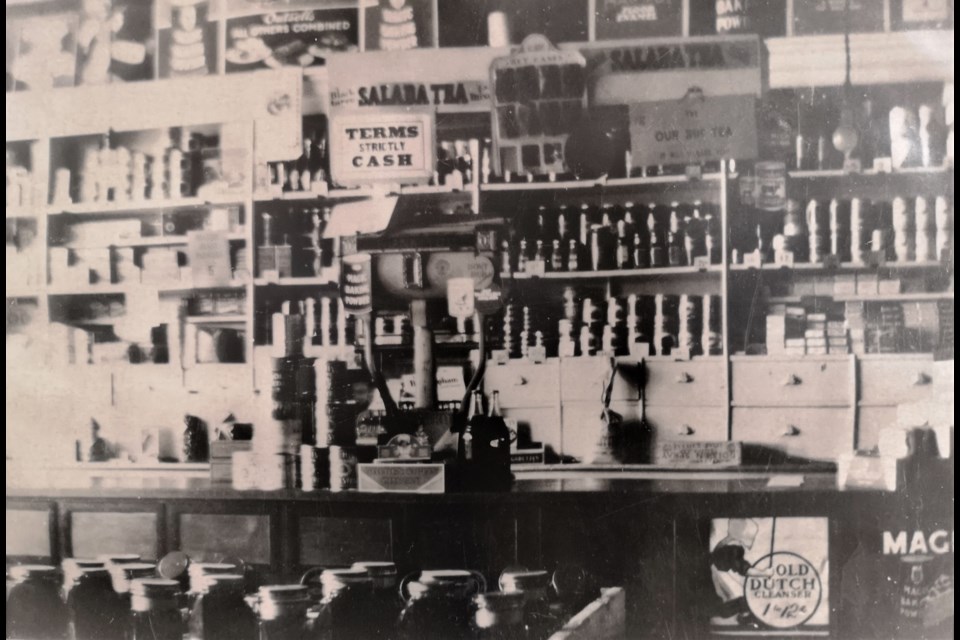Though no longer serving in its original role, the Gilford General Store nonetheless provides a tangible link to the very founding of the community and to one of its most prominent families, the Maconchys.
The store was built by a Mr. Flood around 1853, right after the railway passed through and brought prosperity to what was then a tiny community. In fact, the store was located a mere stone’s throw from the village’s humble, one-room station and its more extensive livestock stables.
For a time, Gilford was one of the more vibrant villages in the region. All kinds of goods were brought from farms, some as far away as Cookstown, to be shipped to distant markets. And as the village prospered, so did the general store and its owner.
But despite the fact it was Flood who established the business, the store would forever be associated with Thomas Maconchy (sometimes spelled McConkey), an enterprising individual who, perhaps more than anybody, was responsible for putting Gilford on the map.
Maconchy had come to Canada in the 1830s, settling for a time in Bradford, where he gained prominence as a sawmill operator and general merchant. In 1853, he purchased 200 acres in Gilford and built a sawmill there. The mill was large enough that a spur line was built linking it to the railway. Maconchy translated his wealth and prominence into a political career that saw him serve in various capacities, culminating as West Gwillimbury representative in the Simcoe County council, a position he held for many years.
In 1863, Maconchy purchased Flood’s general store and, later that year, became Gilford’s first postmaster. In this official capacity as a representative of the federal government, it was his right to name the community as he would. He preferred Cookstown, in honour of his hometown in Ireland, but the postal service would not allow two communities of the same name, for obvious administrative reasons. Instead, he settled on Gilford, named after a small Irish village near where his wife, Margaret, had been born.
The general store was the beating heart of the community. Everything a person could reasonably expect to need could be purchased there. People picked up their mail there. The store boasted a telegraph office and the ticket counter for the railway. It was also a place where people congregated, lingering a few moments to share news and idle gossip.
In 1885, ownership of the business passed to Maconchy’s daughter, Helen, and his son-in-law, James Andrew Blain, who had been working as a clerk in the store for a decade. Like his father-in-law, Blain was infused with an entrepreneurial spirit and had his fingers in several pies. For several years, he operated a cheese factory and creamery with some success, using the rail line to ship products as far away as Toronto. But it was the store that remained the focus of his attention, and he proved a remarkably adept storekeeper, with a mind for business and a warm personality that made patrons feel welcome and respected.
Blain ran the store for more than three decades, only bowing out in 1919 due to old age. After almost 60 years in the family, the store passed to new owners.
The 20th century saw a parade of proprietors come and go, and changes made to the business itself, but the store always remained at the heart of the community — at least until today, as it currently stands empty.



